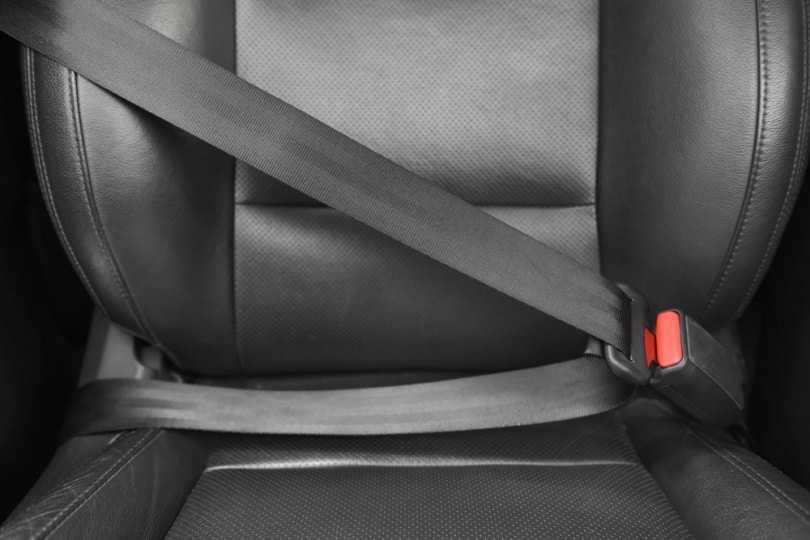When Did Seatbelts Become Mandatory? Effectiveness, Laws, & FAQ
-
Jeff Weishaupt
- Last updated:

George Cayley, an aeronautical engineer, invented seatbelts in the mid-19th century. Since their invention, there has been surprising resistance to this safety feature of automobiles. However, once they were made mandatory, the general public could not deny the importance of seatbelts.
Seatbelts have saved millions of lives, so it was wise for governments worldwide to make them a legal requirement. If you are wondering about the legal status of seatbelts and the laws surrounding them, you’re at the right place.
When Were Seatbelts Invented?
George Cayley¹ was the first developer of seatbelts. He was an aeronautical engineer in the mid-19th century who invented the two-point seatbelt to help pilots stay in their gliders. However, his version of the seatbelt wasn’t used for long; it simply provided a blueprint.
In 1959, Swedish engineer Nils Bohlin worked with Volvo to invent the three-point seatbelt, which is used in most modern cars today. Unfortunately, buyers continued to resist seatbelts during the first few decades of their introduction.

When Did Seatbelts Become a Legal Requirement?
After decades of seatbelt resistance, the National Traffic and Motor Vehicle Safety Act was passed in 1966, which required automobiles to follow certain safety measures. By 1968, all passenger cars had shoulder harnesses and integrated lap and shoulder belts by 1974.
Unfortunately, most people refused to wear these belts, recording only 10% of the drivers and passengers using seatbelts. In 1984, New York passed the first belt-use law, followed by other states, increasing seatbelt use by 50%¹.
That said, New Hampshire is the only state in America with no adult seatbelt enforcement.
What are Primary and Secondary Seatbelt Laws?
Seatbelt laws in the US can be classified into primary and secondary enforcement. States with primary seatbelt laws require officers to stop and ticket drivers for seatbelt violations. Meanwhile, states with secondary seatbelt laws require officers to only stop or cite drivers for seatbelt violations.
Fifteen out of 50 states consider seatbelt violations a secondary offense, but the driver may be charged for not wearing a seatbelt while committing a primary violation, such as speeding. An exception, Colorado considers it a primary offense when a child is not properly restrained in the vehicle.

Thirty-four out of 50 states consider seatbelt violations a primary offense, along with American Samoa, the District of Columbia, Guam, Puerto Rico, the Northern Mariana, and the US Virgin Islands.
By 2009, belt use rose to 88% in 30 states with primary seatbelt laws and 77% with weaker seatbelt laws. Nine states that changed seatbelt laws from secondary to primary saw a 12%–18% increase in seatbelt use.
Seatbelt Laws in the United States
Seatbelt laws vary throughout the US based on the enforcement and the people protected under the law. For example, Alabama, Alaska, and Oregon implemented a primary seatbelt law in 1990 for all ages in all seats, with base fines ranging from $15–$130.
Meanwhile, Arizona, Colorado, Missouri, Nebraska, North Dakota, South Dakota, Ohio, Pennsylvania, and Wyoming only enforced secondary seatbelt laws for front seats with varying base fines.
Other states implemented seatbelt laws based on ages and seats. For example, Washington executed a primary seatbelt law in 1986 for ages 8+ in front seats with a $124 base fine, while Kansas implemented it in 1986 for ages 14+ in all seats with a $10–$60 base fine.
Some states are willing to let off seatbelt violations for a $10 base fine, while others are much stricter, such as North Carolina requiring $266.

Seatbelt Laws in the 1980s
Most states were wise enough to enforce seatbelt laws in the 80s. When states with seatbelt mandates benefitted from a decrease in traffic fatalities, other states were encouraged to strengthen or place their own seatbelt enforcement.
Hawaii, Michigan, New Jersey, North Carolina, Missouri, and Texas enforced their seatbelt laws in 1985, followed by 14 more states the next year. That includes California, Connecticut, Florida, Idaho, and many more.
Colorado, Indiana, Montano, Nevada, Oklahoma, Pennsylvania, and Wisconsin enforced primary seatbelt laws in 1987. In the following year, Illinois and Virginia followed suit. Finally, South Carolina and Wyoming executed seatbelt laws as the 1980s ended.
Some of these states originally had secondary laws but switched to primary enforcements after seeing the decrease in traffic fatalities in states where seatbelt violation was a primary offense.
Seatbelt Laws in the 1990s
As mentioned earlier, Alabama, Alaska, and Oregon enforced primary seatbelt laws for all ages in all seats as the 90s began. This was followed by Arizona, Arkansas, and Rhode Island, with primary and secondary laws in the next year.
By 1995, seatbelt laws were implemented in ten more states. New Hampshire still has no seatbelt laws for adults, but they placed primary enforcement in 1997 for minors in all seats. No more states implemented or changed their seatbelt laws until 2021 when Georgia placed primary enforcement for all ages in front seats with a $15 base fine.

Effectiveness of Seatbelts
The effectiveness of seatbelts is crystal clear. As the CDC has stated, seatbelts reduce traffic deaths and injuries by half. While seatbelts don’t completely eliminate the chances of accidents, most malfunctions occur when the seatbelt is too slacked.
Since the first seatbelt mandate, seatbelts have saved millions of lives. Initially, they saved approximately 7,500 lives per year, but this number went up to 10,000 by 1995. In 2001, seatbelts saved around 12,500 lives. The last documentation details seat belts saving nearly 15,000 lives in 2017.
The Road Safety Observatory conducted a study on vehicles, child restraints, and advanced vehicle systems to determine the effectiveness of seatbelts. The study details that three-point seat belts in front seats are most effective at preventing head-on injuries and fatalities, reducing them by 50%.
During rollover accidents, lap belts are the most effective, producing 74% fewer fatal injuries. Overall, seatbelts have reduced 60% of truck accidents and 45% of passenger vehicle accidents. However, they aren’t as effective in rear seats, only reducing injuries by 26%. It’s also worth noting that seatbelts wouldn’t be as effective as they are now if people weren’t using them. So, the seatbelt mandate has significantly increased the effectiveness of this technology.
In the 60s and 70s, wearing a seatbelt wasn’t mandatory, so seatbelt use was much lower, resulting in no effectiveness. In the late 1980s, after the seatbelt mandate, the traffic fatality rate lowered by 73%.

Conclusion
All states in the US have differing seatbelt laws, but most consider seatbelt violations a primary offense. Now that you know your state’s seatbelt laws and base fines, you can stay more careful about following safety measures while on the road.
Featured Image Credit: Prostock-studio, Shutterstock
Contents
